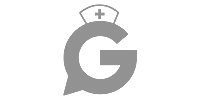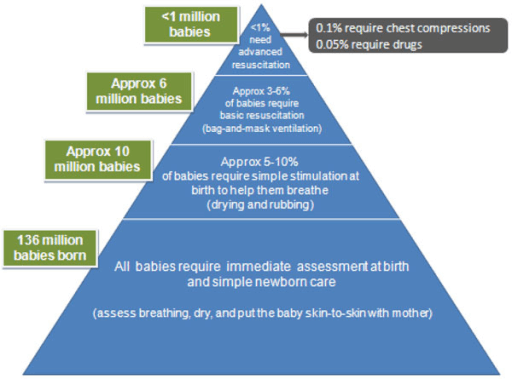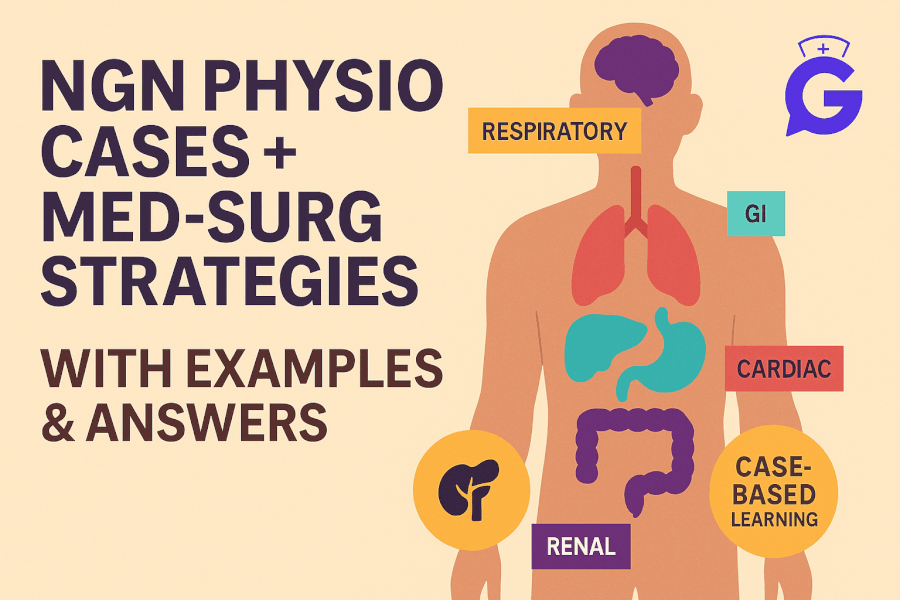I. Introduction: Why a Mega Guide Matters for NCLEX Success
The Next Generation NCLEX (NGN) challenges test‑takers to go beyond memorization and demonstrate clinical judgment. To rise to that challenge, you need a solid grasp of key subjects and the ability to recall them quickly during high‑pressure scenarios. This mega guide brings together the most‑searched NCLEX topics - cardiac arrhythmias, electrolyte imbalances, pharmacology prefixes and suffixes, med‑surg systems, pediatric milestones, prioritization/delegation and nursing mnemonics—into one convenient reference. Each section below introduces a topic, explains why it’s important, and links to a future in‑depth article once it’s published.
🎯 Free NCLEX quiz!
Assess your baseline before diving into the mega guide.
II. Cardiac Arrhythmias Cheat Sheet: Everything You Need to Know
Heart rhythm interpretation is a critical skill for nurses. On the NCLEX, expect to identify common rhythms such as normal sinus rhythm, atrial fibrillation, atrial flutter, supraventricular tachycardia, ventricular tachycardia, ventricular fibrillation and asystole. Pay attention to the rate, regularity, P‑waves and QRS complexes, and know the interventions associated with each rhythm. For example, ventricular fibrillation requires immediate defibrillation, while atrial fibrillation may call for rate control and anticoagulation.
Here's full breakdown: Cardiac Arrhythmias Cheat Sheet. It includes annotated rhythm strips, step‑by‑step interpretation guides and memory aids (like “sawtooth flutter” for atrial flutter). Remember that an irregularly irregular rhythm with no distinct P‑waves suggests A‑fib, and that torsades de pointes - a variant of ventricular tachycardia - responds to magnesium sulfate.
III. Electrolyte Imbalances Made Easy: Signs, Symptoms & Mnemonics
Electrolyte imbalances can manifest as muscle weakness, arrhythmias, seizures or altered mental status. Knowing normal electrolyte values (sodium 135–145 mEq/L, potassium 3.5–5.0 mEq/L, calcium 8.5–10.5 mg/dL, magnesium 1.5–2.5 mEq/L) helps you recognize abnormal lab results quickly. Use mnemonics like “MURDER” for hyperkalemia (Muscle cramps, Urine abnormalities, Respiratory distress, Decreased cardiac contractility, EKG changes, Reflexes) and “FRIED SALT” for hypernatremia (Flushed skin, Restlessness, Increased blood pressure, Edema, Decreased urine output, Skin dry, Agitated, Low‑grade fever, Thirst).
Our detailed guide - Electrolyte Imbalances for the NCLEX: Signs, Symptoms & Treatment - maps each imbalance to its clinical manifestations and treatments, including fluid management and emergency interventions. For now, associate hypokalemia with muscle weakness, U‑waves and constipation, and hypocalcemia with tetany and positive Trousseau’s and Chvostek’s signs.
IV. Pharmacology Suffixes and Prefixes to Memorize
Pharmacology doesn’t have to be overwhelming if you learn to recognize patterns. Drug names often contain clues about their class and mechanism:
- ‑pril indicates ACE inhibitors (e.g., lisinopril), which lower blood pressure by inhibiting the renin–angiotensin–aldosterone system. Watch for a persistent cough and hyperkalemia.
- ‑sartan denotes angiotensin II receptor blockers (ARBs), used for hypertension and heart failure; side effects are similar to ACE inhibitors but without the cough.
- ‑olol signals beta‑blockers (e.g., propranolol) that reduce heart rate and blood pressure; monitor for bradycardia and fatigue.
- ‑dipine refers to calcium channel blockers (e.g., amlodipine) that cause vasodilation; watch for hypotension and peripheral edema.
- cef‑ or ceph‑ prefixes mark cephalosporin antibiotics; check for cross‑allergy with penicillin.
Pharmacology Prefixes and Suffixes Cheat Sheet expand on this list with ‑statins, ‑prazoles, ‑floxacins, ‑zolams and more. It also provides practice scenarios that challenge you to identify drug classes based on name alone and anticipate side effects.
V. Med‑Surg Nursing Cheat Sheet: High‑Yield Systems Review
The medical–surgical portion of the NCLEX covers a wide range of conditions across body systems. To stay organized, focus on the most common disorders and their nursing implications:
- Cardiac: Heart failure, myocardial infarction, hypertension and shock. Learn the MONA protocol (Morphine, Oxygen, Nitroglycerin, Aspirin) for chest pain, and know that elevated BNP levels suggest heart failure while elevated troponin indicates myocardial infarction.
- Respiratory: COPD, pneumonia, asthma and pulmonary embolism. Recognize the differences between obstructive and restrictive diseases and treatments like bronchodilators, corticosteroids and anticoagulants.
- Renal: Acute kidney injury vs chronic kidney disease, dialysis management and fluid restrictions. Monitor BUN, creatinine, and urine output closely.
- Neurological: Stroke (ischemic vs hemorrhagic), seizures and increased intracranial pressure. Use the FAST mnemonic (Facial droop, Arm weakness, Speech difficulty, Time to call 911) to recognize stroke symptoms.
- Gastrointestinal: Peptic ulcer disease, liver cirrhosis, pancreatitis and inflammatory bowel disease. Understand lab markers (e.g., amylase and lipase for pancreatitis) and interventions like NPO status and pain control.
Our article - Med‑Surg Systems Review for NCLEX - provides tables summarizing signs, diagnostics and interventions for each condition, plus med‑surg practice questions.
VI. Pediatric Growth and Development: Milestones & Red Flags
Pediatric nursing requires understanding normal developmental milestones and recognizing deviations that signal potential issues. Know when children should achieve gross motor, fine motor, language and social milestones, such as rolling over by 4–6 months, sitting without support at 6–7 months, crawling at 9 months and walking at 12–15 months. Use the simple mnemonic “Head, Shoulders, Knees and Toes” to remember that development proceeds from head control to sitting to crawling to walking.
A comprehensive article on our website, titled: Pediatric Growth and Development Cheat Sheet for NCLEX includes milestone charts, mnemonics and nursing interventions for common pediatric conditions.
VII. Prioritization and Delegation: Real Examples to Ace the NCLEX
Prioritization and delegation questions challenge your ability to apply critical thinking and understand scope of practice. Use the ABC framework (Airway, Breathing, Circulation) to determine which patient requires immediate attention. Follow it with Maslow’s hierarchy to address physiological needs before safety, love/belonging, esteem and self‑actualization. Recognize tasks appropriate for unlicensed assistive personnel (UAPs) versus licensed practical nurses (LPNs) and registered nurses (RNs): UAPs can take vital signs on stable patients and assist with activities of daily living, while LPNs can administer oral medications, insert urinary catheters and reinforce teaching; RNs must perform initial assessments, care plans and IV push medications.
Read our piece NCLEX Prioritization & Delegation Strategies - for step‑by‑step examples and practice questions. It will show you how to apply these frameworks to complex scenarios and avoid common pitfalls.
VIII. Best Nursing Mnemonics for the NCLEX: 50 Tricks for Remembering Complex Concepts
Mnemonics are a powerful tool for remembering cumbersome lists and sequences. Here are some favorites:
- MONA for myocardial infarction care: Morphine, Oxygen, Nitroglycerin, Aspirin.
- DRUGS for corticosteroid side effects: Depression, Round face, Ulcers, Glycosuria/Osteoporosis, Suppressed immunity.
- PIES for psychiatric nursing priorities: Physical needs, Intervention safety, Emotions, Social/spiritual support.
- SLUDGE for cholinergic toxicity: Salivation, Lacrimation, Urination, Diaphoresis, GI upset, Emesis.
Our article - Nursing Mnemonics: 50 Tricks for NCLEX Success - expands on this list with mnemonics for maternal‑newborn nursing, mental health, fluid and electrolyte management and more.
🚀 Ready to test your knowledge? Access our comprehensive quiz bank.
Go to Free NCLEX Practice Questions →IX. Final Thoughts and Next Steps
Preparing for the NCLEX is a marathon, not a sprint. By focusing on high‑yield content and using tools like cheat sheets, mnemonics and practice questions, you’ll strengthen your knowledge base and build the confidence needed to excel.
- Pediatric Nursing Growth & Development Milestones: Deep dive into developmental stages and common pediatric conditions.
- Nursing Mnemonics: 25 Easy Ways to Remember Complex Concepts: Boost your memory with acronyms and catchy phrases.
- NCLEX Cardiovascular Drugs In‑Depth: Master ACE inhibitors, beta‑blockers, calcium channel blockers and more.
- NCLEX Pharmacology Made Simple (Part 3): Review high‑yield drugs, calculations and nursing considerations.
Bookmark this mega guide, revisit it as you progress through nursing school and share it with classmates. When the detailed articles go live, updating the links will transform this page into an authoritative hub that not only helps you but also improves GoodNurse’s visibility in search results.







